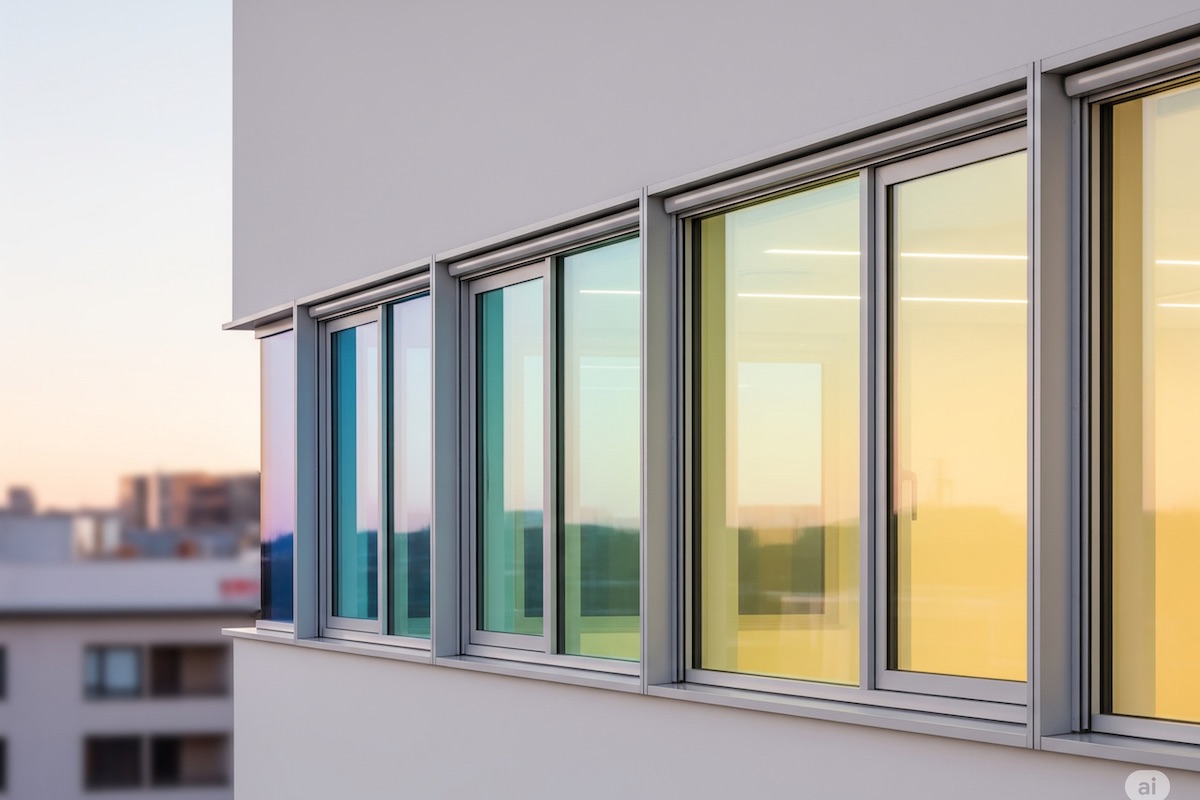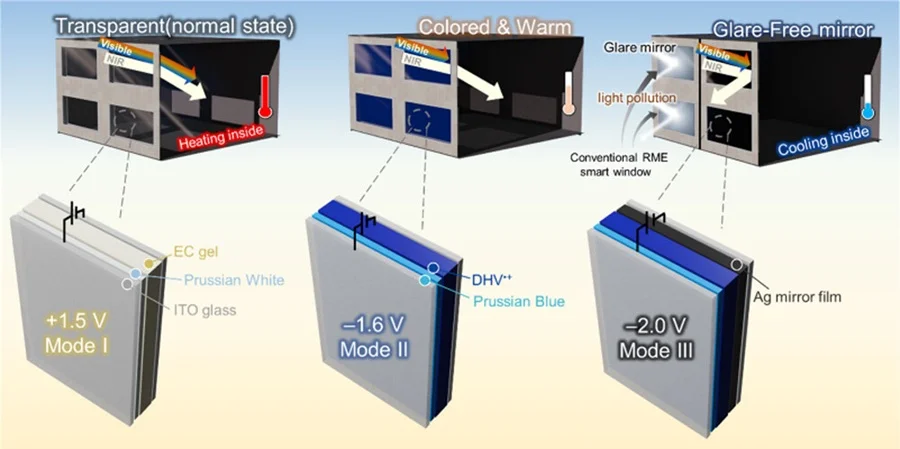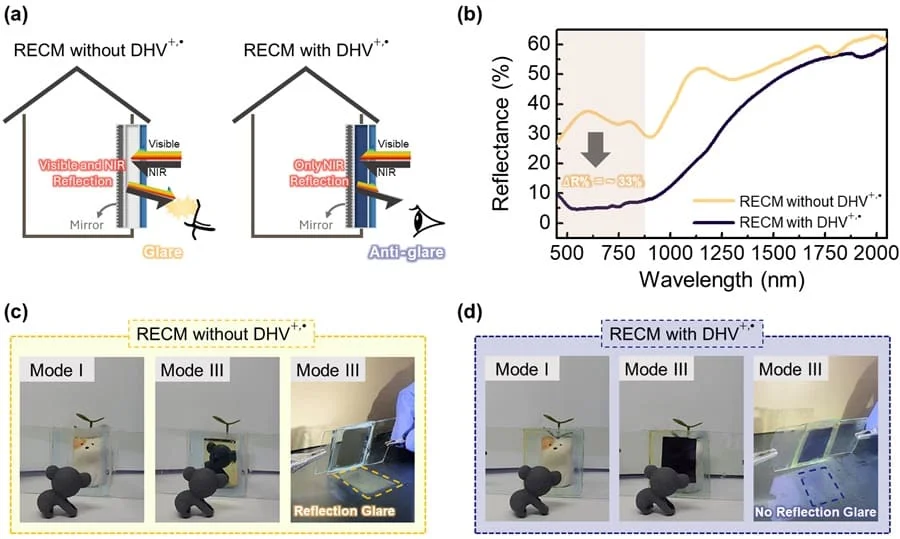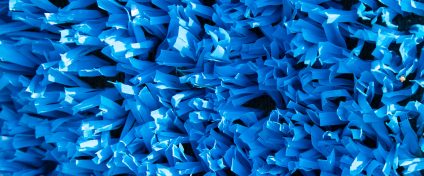The smart window from the Korea Advanced Institute of Science and Technology (KAIST) regulates light, heat, and glare in real time using electrical signals, improving thermal comfort and reducing urban heat islands

A smart window that controls light, heat, and glare in real time for better energy efficiency
Researchers at the Korea Advanced Institute of Science and Technology (KAIST) have developed a smart window capable of reducing energy consumption, controlling indoor lighting, and minimizing glare reflected outward.
While smart windows are often associated with shielding interiors from heat and unwanted sunlight, their reflective impact on outdoor environments is frequently overlooked. Uncontrolled glass reflections can significantly contribute to urban heat islands, a growing concern in densely built areas. Many studies focus on thermal insulation, solar radiation control, or light refraction individually. The innovation from KAIST, however, integrates all three goals into a single smart window device.
An electrochromic window that changes color to meet new demands

Sunlight entering through windows accounts for nearly 40% of a building’s total energy use. The research team led by Professor Hong Chul Moon from the Department of Chemical and Biomolecular Engineering at KAIST has developed a smart window technology that allows users to adjust incoming light and heat according to their needs, while also neutralizing glare from external sources.
Unlike traditional windows, which passively respond to changes in temperature or light, these Korean smart windows allow real-time control via electrical signals. Their next-generation system, known as RECM (Reversible Electrodeposition and Electrochromic Mirror), uses an electrochromic device to actively regulate the transmission of both visible and near-infrared light.
The optical properties of the window change in response to electrical input, offering dynamic control over how the window performs.
One smart window, three functional modes


The RECM system works in three distinct modes, each activated by voltage control.
Mode I – Transparent
Ideal for winter months, this mode allows both sunlight and heat to pass through, much like a traditional window, to warm up indoor spaces naturally.
Mode II – Tinted
The window takes on a deep blue hue thanks to a redox reaction forming two compounds: Prussian Blue (PB), an electrochromic material that turns blue under electrical stimulation, and DHV+, a colored radical molecule. This mode absorbs visible light and allows partial heat transmission, offering both thermal control and privacy.
Mode III – Reflective with deposition
In this configuration, silver ions (Ag⁺) are reduced and deposited onto the electrode surface, creating a reflective layer that blocks both light and heat. Meanwhile, the tinted layer absorbs reflected light, eliminating external glare and protecting pedestrians from being dazzled.
A dramatic drop: over 27°C in heat reduction
In lab tests using a scaled-down building model, the RECM smart window showed remarkable performance. A conventional glass window allowed indoor temperatures to climb to 58.7 °C in just 45 minutes. With RECM in Mode III, the temperature stabilized at 31.5 °C, cutting heat by over 27 °C.
“This research goes beyond current smart window technologies, which have focused only on visible light control,” said Professor Hong Chul Moon, corresponding author of the study. “We’re presenting a truly intelligent platform that also considers pedestrian safety through glare prevention. Potential applications include urban buildings, vehicles, and trains.”
The results were published on June 13, 2025, in ACS Energy Letters. The study’s authors include Hoy Jung Jo, Yeon Jae Jang, Hyeon-Don Kim, Kwang-Seop Kim, and Hong Chul Moon.












